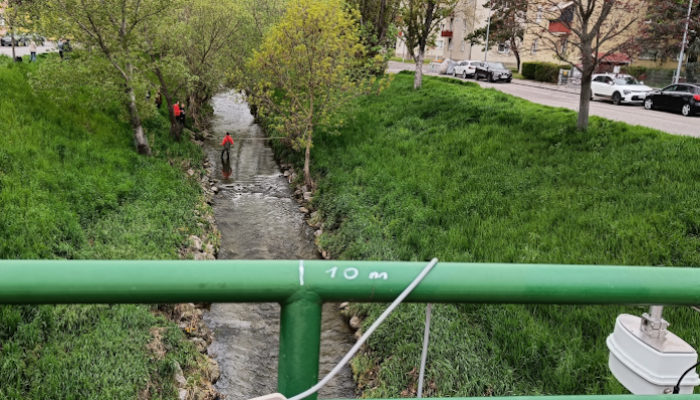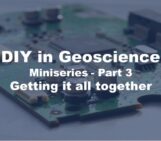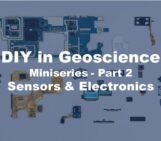
A Vulture circled over the motley crew of hydrometricians that had gathered for the showdown at Liesingbach for the 2nd EGU Flow Regatta on April 24th, 2023. The call had gone out far and wide: the winner of the showdown would achieve everlasting glory, songs would be sung, their name echoing through legend. The losers would become, as Tom Waits predicted, just more dirt in the ground.
Storm clouds gathered threateningly in the Viennese sky behind Sheriff Salvador and his deputy Rolf as they presided over the competition.
“Now each of you have.. history.. I know I do. Some of you work in Salt, others in Moving Pictures, and we even have some Pulse Counters, and Waders among us.”

Figure 1. The motley crew of hydrometricians. Deputy Rolf nervously eyes Christoph. King Nick, incognito amongst the common people. Alex suits up for the coming showdown.
The contestants shifted nervously and eyed the others. Alex looked up with huge Coke bottle glasses as he smoothly got into his Waders. All participants were hardened by years of outdoor work. They trusted nobody and nobody trusted them. These were scientists who slept with their instruments beneath their pillows. They slept lightly. A church bell rang high noon. They all assumed the bell tolled for them.
The rules are simple, continued Salvador, strutting amongst the volatile crowd, “I’m going to send a deputy among you and ask you one question: What is your Scientific Wild Ass Guess, your SWAG? Closest shot wins. Furthest, …. well, we all know what happened last time.” Rolf, holding his side-piece squinted at Christoph (Figure 1).
The contenders were:
- Nick “still-post-thesis-defence-hung-over” Hutley, who was expediting the robot revolution with his “Johnny 5” inspired stereoscopic computer vision system. I’m starting to come to grips with what this system can do: simultaneously measure surface velocity AND orthorectify AND measure water depth, so no control points required: wild, man.
- King Nick “of the people” Everard, dressed in a conspicuously proletariat “street” outfit while constantly meeting people’s gaze and whispering “I’m King Nick”, had a radar gun and an overwhelming, nearly crippling, self-confidence.
- Alex “Go Big or Go Home” Hauet carried a 4-Blade Ott C2 Long Barrel Pulse Maker.
- Christoph “Ignore That Man Behind the Curtain” Sommer had a TQ as well as access to the RQ30 installed on the bridge.
- Gabe, who had travelled a great distance to be here, at great personal cost, with nothing but a duck and two small dinosaurs strapped to his back. His instruments, the QiQuac* and T-HRECS, had been developed with “Extra-Fine” resolution, “Retro Graphics”, and a “Blood Curdlin’” Quack, for times when things got real.
- Salvador had the DischargeApp, which claims to be the fastest device, just draw the smartphone and in 5 clicks you have a measurement.
One of the contenders dared to stand up and asked Salvador:
“How come Sheriff and contender at the same time?” Salvador stared at him and said: “simply, I am the Sheriff”.
Sheriff Salvador swaggered up to Gabe, squinted through his years of experience and scepticism, spat on the dry earth (instantly evaporated) and said “You’re not from round these parts.”
“No sir, I’m from Kanada!” he said brightly.
Salvador spat again, (shpshh) “Well, Kanada, I hope you’re smarter than you look, I’m deputising you,” and he slapped a deputy badge on his chest. “Go get me the SWAGs from these fine folks. Alright Rolf, Round ‘em Up!”
Deputy Rolf sprang to action “Hiya! Get along there! Go on, Giddup!” and the hydrometricians started and were herded away!
Gabe quietly collected SWAGs, shown in Table 1. To be highlighted is that Alex had more time than anyone else, more than 20 mins, but still complained about being rushed for his estimate. Nick Hutley had Johnny 5 setup on a ladder and started measuring.
At the Saloon afterwards while food, drink, and laugh were flowing, Gabe declared “That’s good value, you get more water with the QiQuac device!” to which Sheriff Salvador chuckled and said, “Well, maybe we will never know the true flow, ever, but we can certainly say this: Alex Hauet gets the award for DFL with a discharge of 1.6 m3/s! Kate and Deputy Rolf share the prize for the most accurate SWAG. Let’s Party!!! Yeehhaaaw!!”
The storm clouds that had threatened earlier in the day parted and the glorious sun shone through on our little Austrian party, where comradery, friendship, and the spirit of competition warmed the hearts of the attendees. Alex, still sore at winning the DFL award, burst out: “Well if it wasn’t for my estimate, the average SWAG would have been much lower!”
Sheriff Salvador, laughing, smacked Alex on the back and said, “Hahaha, It’s true! Often the average of the SWAGs is very close to the true discharge value, and your wildly large estimate helped us get there. No matter! We all had a good time, learned something new, and you’re all invited back to town for the 2024 EGU Flow Regatta! Yeehaaww!”
Systems and methods used at the event
- Computer Vision Stream Gauging (CVSG) (link to HESS paper)
- Current meter by ott.com
- DischargeApp – by Photrack
- HydroSTIV by hydrosoken.co.jp
- QiQuac by fathomscientific.ca
- Sommer TQ – S probe by sommer.at
- SVR radar by stalkerradar.com
DischargeApp, CVSG and HydroSTIV use image velocimetry techniques: they use successive video frames to estimate the surface velocity by identifying the movement of surface patterns between frames. There are different methods for the identification of surface patterns (e.g. LSPIV: Large Scale Image Velocimetry, PTV: Particle Tracking Image Velocimetry, STIV: Space Time Image Velocimetry). All these methods require an orthorectification of the images and an estimate of the cross-sectional area and of the ratio between surface velocity and bulk velocity (average velocity across the flow depth).
Radar-based methods use the frequency (red) shift between outgoing and incoming radar waves to calculate and average surface velocity (SVR). It again needs an estimate of the cross-sectional area and of to bulk-surface velocity ratio.
Image-based and radar-based methods are non-contact and can be made relatively inexpensively and continuously.

Instrument calibration for salt gauging
The QiQuac and the Sommer TA use the salt dilution method to measure the discharge. A known amount of salt has to be injected into the stream, and its concentration is measured downstream. This method assumes that the salt is fully mixed across the channel.
The current meter consists of a calibrated propeller which is summered into the water and the speed at which it spins is defined by the flow velocity. In this method, the river cross section is divided into several vertical subsections, in each one the area is obtained by measuring the width and depth of the subsection, and the water velocity is determined by the current meter. The discharge in each subsection is computed for each subsection by multiplying the area by the velocity. The total discharge is then the sum of the discharge of each subsection.
Results
The discharge estimates by the participants prior to using any device are summarized in Table 1, the measurements with the participating devices in Table 2. The SWAG average was relatively close to the average measurement taken by the devices.
This site was challenging for the salt dilution for two reasons: 1. The channel was relatively smooth with only a few riffles, and 2. The background conductivity changed significantly, it varied by more than 18 μS/cm over the course of the second measurement at 13:20.
So from these tables, we can not be certain what the “true” flow was (the official hydrometric record from the selected site did not provide good enough resolution to add information to this). The estimates from the different devices vary in a range of 0.19 m3/s, which is roughly 50% of the average estimate. Overall, the experiment shows that streamflow estimation remains a challenging art.
Table 1. SWAGs
| Participant’s initials | SWAG (m3/s) |
|---|---|
| K.M. | 1.00 |
| B.S. | 1.00 |
| N.H. | 0.35 |
| A.H. | 1.60 |
| J.G. | 0.15 |
| B.W. | 0.30 |
| A.B | 0.18 |
| K.L. | 0.41 |
| N.E. | 0.23 |
| S.Z. | 0.70 |
| N.C. | 0.15 |
| J.W. | 0.85 |
| C.S. | 0.20 |
| R.H. | 0.51 |
| G.S. | 0.30 |
| Average | 0.53 |
| 2*CoV (95% conf.) | 0.84 |
Table 2. Measurement Results
| Method | Time | Q (m3/s) |
|---|---|---|
| Computer Vision Stream Gauge | 12:00 | 0.395 to 0.584 |
| Current meter OTT | 12:00 | 0.43 |
| Current meter Nick’s cut* | 12:00 | 0.57 |
| Discharge App (video) | 12:00 | 0.446 |
| HydroSTIV** | 12:50 | 0.428 |
| QiQuac | 13:20 | 0.56 |
| Sommer TQ | 13:20 | 0.468 |
| SVR | 12:00 | 0.5 |
*1pt per vertical, 3 verticals
** Result given after the ‘Storm Gathering’
Edited by B. Schaefli; the Flow regatta was a side event of the MacGyver Session, scheduled as “Pop-up networking events”



